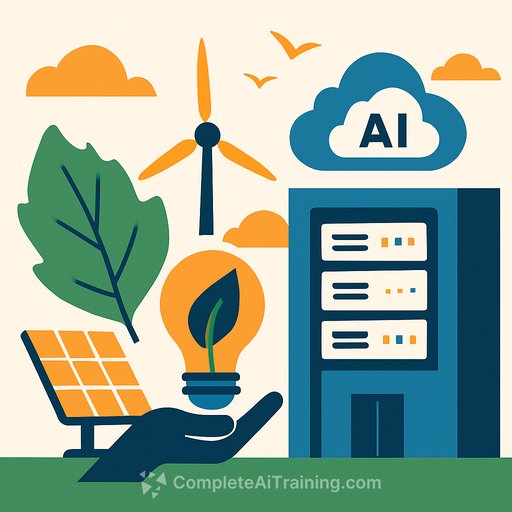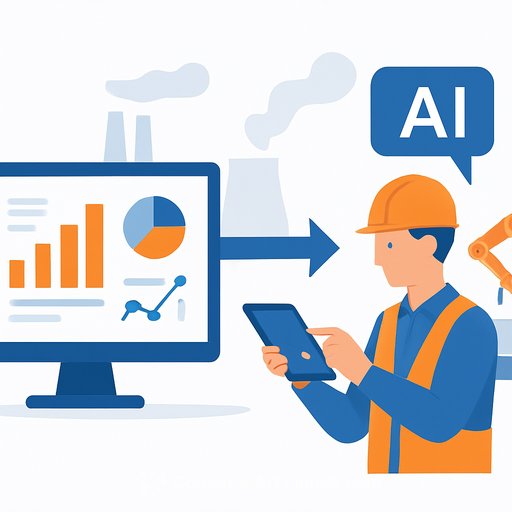How Sustainable Is Microsoft's Wisconsin AI Data Centre? An Operations View
Microsoft is building a high-capacity AI data centre in Mount Pleasant, Wisconsin, with a second site planned. The combined commitment exceeds $7bn, with the first facility expected online in early 2026.
For operations leaders, the interesting part isn't the headline GPU count. It's how the site plans to manage heat, water, and energy at scale without pushing costs onto the community.
What's Being Built
The facility is engineered for frontier AI training, with hundreds of thousands of NVIDIA GPUs in clustered configurations. High rack density and sustained training runs are the baseline workload.
A second site will follow, bringing permanent employment at both locations to about 800 roles, with more than 3,000 workers involved at peak construction.
Cooling Strategy: Closed-Loop First
More than 90% of the site will use closed-loop liquid cooling. The system is filled once during construction and continually recirculated, reducing onsite water draw and eliminating evaporation loss in normal operation, according to Microsoft.
The remaining footprint uses outside air cooling, switching to water only during periods of extreme heat. Microsoft estimates annual water consumption similar to a single restaurant's yearly use.
Energy Sourcing and Grid Impact
Microsoft states it will match every kilowatt-hour consumed with carbon-free electricity supplied to the grid. A new 250 MW solar project in Portage County is part of the plan.
To limit bill shock for local residents and businesses, Microsoft says it is prepaying for the energy and electrical infrastructure tied to the Wisconsin facilities. The company is working with WE Energies under transparent tariffs to support grid reliability.
Environmental and Community Commitments
Beyond the fence line, Microsoft is funding ecological restoration across Racine and Kenosha counties. Projects with the Root-Pike Watershed Initiative Network include Cliffside Park, Lamparek Creek, Kirkorian Park, and the Shagbark Restoration Area.
On workforce, Microsoft's Datacenter Academy with Gateway Technical College targets training for 1,000+ students over five years to support data centre roles.
What This Means for Operations Teams
- Thermal envelope: Closed-loop liquid cooling supports higher rack density and steadier thermal profiles. Expect tighter heat extraction efficiency and fewer hot-cold aisle issues when deployed correctly.
- Water risk: Fill-once, recirculated cooling cuts exposure to drought and local restrictions. Validate makeup water quality, corrosion control, and leak detection at scale.
- Energy planning: Renewable matching plus prepaid infrastructure can stabilize OpEx exposure. Confirm curtailment procedures, peak pricing scenarios, and demand response triggers with the utility.
- Capacity orchestration: Frontier model training demands long, uninterrupted runs. Align maintenance windows, firmware rollouts, and network changes with training cycles to avoid expensive restarts.
- Supply chain: GPU clusters at this scale require spares, rapid swap processes, and clear RMA pathways. Track mean time to repair at the sled and row level.
- Site resiliency: Verify redundancy across cooling loops, pumps, PDUs, and network fabrics. Test failover under realistic thermal load and seasonal conditions.
What to Track (Practical KPIs)
- Rack density and utilization: Targets vs. achieved density, with temperature deltas at server inlet/outlet.
- Thermal efficiency: Loop inlet/outlet temperatures, pump efficiency, and heat exchanger effectiveness.
- Water metrics: Annual makeup water volume, leak incidents, and treatment performance.
- Energy profile: Carbon-free matching rate, curtailment hours, and tariff-driven cost per MWh.
- Uptime under peak heat: Performance of air-assisted zones during high humidity and temperature spikes.
- Sustainability spend: Restoration project milestones and measurable outcomes across local sites.
Open Questions Ops Leaders Should Clarify
- Backup generation and fuel strategy, plus emissions controls and runtime limits during grid events.
- Component-level failure patterns in dense GPU clusters and the swap model to keep training jobs on track.
- End-to-end monitoring: Are thermal, electrical, and workload schedulers integrated well enough to prevent cascading throttles?
- Tariff mechanics: How prepaid infrastructure and transparent tariffs translate into predictable monthly OpEx.
The Bottom Line
Microsoft's Wisconsin build pairs high-density AI infrastructure with closed-loop cooling and renewable matching to reduce local water draw and stabilize energy costs. For operations, the value is in the details: loop reliability, grid coordination, and runbook discipline that keeps long training jobs uninterrupted.
If your team is preparing for similar AI workloads, invest early in thermal instrumentation, utility alignment, and a maintenance cadence that respects training schedules.
Team upskilling: For role-based AI operations learning paths and certifications, see Courses by Job at Complete AI Training.
Your membership also unlocks:






